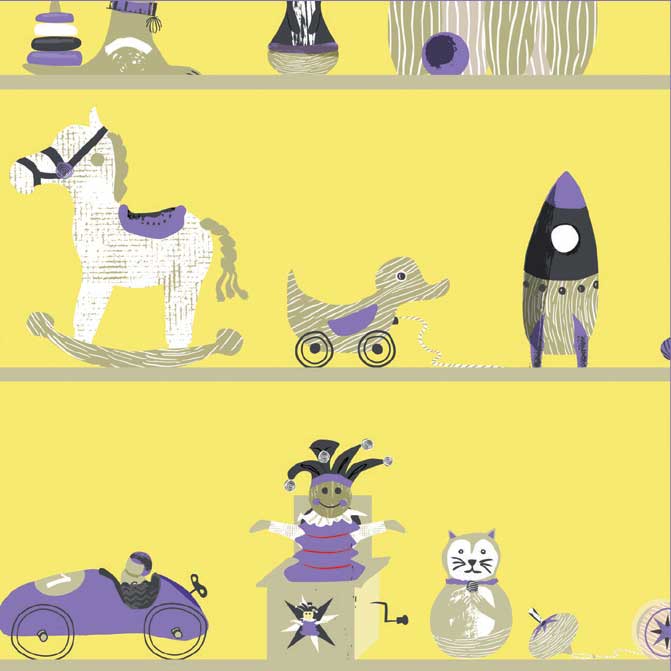
by Kimberly Senko, BS, and Bethany Harper, MD
Ms. Senko is a fourth-year medical student at Wright State University Boonshoft School of Medicine, and Dr. Harper is Assistant Professor and Director of Medical Student Education in the Department of Psychiatry at Wright State University Boonshoft School of Medicine in Dayton, Ohio.
Funding: No funding was provided.
Disclosures: The authors have no conflicts of interest relevant to the content of this article.
Department editors: Julie P. Gentile, MD, and Allison E. Cowan, MD, are Associate Professors with the Department of Psychiatry at Wright State University in Dayton, Ohio.
Editor’s Note: The patient cases presented in Psychotherapy Rounds are composite cases written to illustrate certain diagnostic characteristics and to instruct on treatment techniques. The composite cases are not real patients in treatment. Any resemblance to a real patient is purely coincidental.
Abstract: Play therapy is a valuable tool in psychotherapy with children that has been shown to be effective in the treatment of mental illness and behavioral problems. In play therapy, the therapist follows the child’s lead through play, and the child expresses thoughts and feelings that might be difficult to communicate otherwise. The therapist creates a space to allow children to practice play and pretend, thus allowing the therapeutic alliance to develop. The eight tenets of play therapy are discussed, and an illustrative case vignette that demonstrates the common ego defenses and developmental hurdles that can be addressed in play therapy is presented.
Keywords: Child psychiatry, play therapy, child psychotherapy, counseling, child and adolescent therapy
Innov Clin Neurosci. 2019;16(5–6):38–40
Play has been recognized by the United Nations Human Rights Council as a right of every child because it is critical to human physical, emotional, social, and cognitive development.1 Play is vital to healthy brain development.2 The foundation of a secure caregiver relationship is critical to the trajectory of childhood development and is often mediated through the act of shared play.2 Play is the mechanism by which children learn how to interact with the world around them and begin to understand social relationships. It is a way to learn and explore the world in a safe environment while mastering new competencies.
According to Piaget, children below the age of 11 years often lack the full capability for abstract thought, which is necessary for meaningful verbal expression.3 Children 10 years of age or younger, who are in the preoperational stage or concrete operational stage of cognitive development, are more likely to exhibit concrete thinking and have trouble verbalizing difficult emotions. As Axline said, “play is the child’s natural medium of self-expression.”4 In contrast to adults, who are better able to express feelings through words, children are more likely to communicate feelings through play. The central tenet of play therapy is that children use play to communicate unconscious conflicts and feelings through displacement with the therapist. Play therapy allows children to directly or symbolically act out their thoughts and emotions.5 The following clinical vignette illustrates the core facets of play therapy and play therapy techniques.
Case Vignette
SH was a seven-year-old girl referred to therapy due to increased anxiety and school refusal. Approximately six months previously, her grandmother died suddenly, and, shortly after, her father seriously injured his shoulder at work. She began exhibiting symptoms of excessive worry, somatic symptoms, crying spells, and nightmares. She began refusing to go to school and cried when forced to separate from her parents. She had frequent nightmares of monsters chasing her. She refused to sleep in her own room and checked the locks on the doors multiple times before finally going to bed. Prior to her grandmother’s death, SH was calm but slow to warm in new situations.
Practice Point: Principles of Play Therapy
At seven years old, SH is in the ideal age range for play therapy because she is at a developmental age where play is the language she uses to communicate. Axline, one of the first researchers in the field of play therapy, emphasized a child-centered and nondirective approach to therapy.4 She developed Child-centered Play Therapy in 1947. The eight guiding principles of play therapy include: 1) forming a warm, friendly, therapeutic alliance with the child, 2) accepting the child, 3) establishing a therapeutic environment that fosters permissiveness, 4) recognizing and reflecting back the feelings the child expresses, 5) recognizing and respecting the child’s ability to solve their own problems, 6) being nondirective and letting the child lead the therapy, 7) recognizing that therapy is a gradual process, and 8) establishing limitations to anchor therapy in reality.4 These principles are essential to follow during therapy, especially during the first visit when it is critical to foster a safe and comfortable environment for the child.
Case Vignette, continued
At her initial appointment, SH refused to separate from her mother. She sat close to her mother on the couch, holding her hand tightly, as her mother began discussing recent events. As the session progressed, she started looking around the room and appeared to be looking at all of the toys.
The therapist smiled warmly at SH and stated, “You can play with any of these toys whenever you like.”
When addressed directly by her therapist, SH buried her face in her mother’s arm. A few minutes later, after the therapist returned to conversing with the mother, SH slowly freed her hand and slid off of the couch. She started walking around the room and briefly stopped to look at each toy until she settled in front of a large dollhouse. She started to inspect each doll while looking over her shoulder at the therapist and her mother, before she picked up each one. At the end of the session, her therapist and her mother helped SH clean up the toys and showered her with praise.
Practice Point: the Initial Consultation
Each phase of play therapy has integral tasks, including those that shape the patient–physician relationship, those that facilitate reflection and change, and those that pertain to the work with the parent or guardian.6 One of the most important goals of the first play therapy session is to create a holding environment where the child feels safe and comfortable to engage in imaginative play. Parents and guardians are often involved during the first few sessions, depending on the child’s ability to separate. During the first session, it is important to set up the frame of therapy by discussing scheduling, routines for treatment, roles within the therapy relationship, and stages of treatment. By allowing the child to explore the toys in the room, this encourages playful expression, while providing must-needed limits and rules to maintain safety and order and informing the evaluation. This also provides the parent and child with expectations and consistency. During the first phase of treatment, which includes the initial session, evaluation, and formulation, the therapist should be sensitive to the needs of the parent or guardian and the child. This includes paying close attention to temperament as illustrated in the vignette above. The therapist noted SH appeared anxious and slow to warm, so the therapist cautiously engaged her and allowed her the space to explore the room when she was ready.
Case Vignette, continued
When SH arrived for her fourth session, she appeared nervous at first, refusing to let go of her mother’s hand. Thus far, she had been unable to separate from her mother during therapy. However, this time, as SH and her mother walked into the therapy room, SH let go of her mother’s hand and sat in front of the dollhouse. A few minutes later, the mother told SH she would be in the waiting room if SH needed her, and then slipped out of the room. SH continued playing with the dolls quietly and did not appear distressed. She eventually cradled one of the dolls, created a sling out of tissues, and wrapped it around the doll’s right shoulder. She proceeded to lay the doll in bed and cover it with a blanket.
Practice Point: the Treatment Phase
As treatment progresses, it is necessary for the child to feel comfortable enough to separate from the parent or guardian. The child should be allowed to decide what to do in each session. The therapist is nondirective, and the child is in control of the direction of play. This maximizes the child’s ability to express internal and external conflicts more freely and take ownership of treatment. Understanding the ego defense mechanism of displacement is essential to play therapy. Displacement is the idea that feelings connected with a person or situation are displaced onto another person or object, which is safer than expressing the real conflict verbally or physically. Closely related to this is the therapeutic aspect of fantasy. A child is able to express thoughts and wishes through playing pretend without any repercussions. Thoughts and emotions that might be socially unacceptable in real life or intolerable due to the child’s developmental phase are able to be displaced onto toys and experienced without any fear of consequences. For example, a child who is angry with his mother might act out his emotions by pretending that a toy character physically attacks another toy. In our vignette, SH was displacing conflicting feelings about her father onto the doll through fantasy by comforting and “fixing” the doll’s shoulder.
Case Vignette, continued
After placing the doll in bed, SH turned toward her therapist and handed her a doll. She stated, “This is the baby. The baby needs to get ready for school or she’s going to be late.” SH then picked up another doll, announced she was the mother and stated, “You are going to have to be a big girl and get ready by yourself now. I can’t help you. Hurry up or you will be late for school.” SH walked her doll into the bedroom and started to care for the injured doll.
Her therapist stated, “The baby probably feels scared and alone getting ready by herself. I wonder if she’s scared to leave her dad and go to school.” SH suddenly grabbed the injured doll and threw it across the room where it landed behind the couch.
Her therapist stated, “You look very angry right now. Sometimes when I get angry I want to throw things too. We have to be careful and keep each other safe. How can we show our anger and stay safe?”
Practice Point: Continuum of Interventions
As treatment progresses, the displacement of the child’s internal world onto the play gives the therapist the opportunity to promote reflection and enact change. The child’s expression should always be validated to minimize disruption of the play. Specific therapy interventions range from passive to expressive, and the use of specific interventions are based upon the child’s ego strength and reflective capacity.7,8 A supportive intervention can be promoting play where engaging in play itself is the goal.6 This was seen during the first session with SH. In our vignette, SH’s therapist attempted to use an expressive intervention by commenting on the internal feelings of the baby, who is a representation of SH. It was clear from SH’s response she could not tolerate the intervention. As the therapist, it is important to only interpret directly from the play when the child is ready to hear the interpretation and monitor for signs the child is ready for an expressive intervention, which connects fantasy with conflicting reality. In any therapy modality, the timing of interpretations is important. In our vignette, if the child was not ready to hear the interpretation, the play would often shut down quickly due to the development of resistance. To foster a permissive environment, it is vital to make a safe play space and respect the child’s defenses. In response, her therapist commented on her current affect to identify emotion, promote reflection, and establish a connection between feelings and behavior. This, over time, would promote emotion regulation and more adaptive responses to intense emotion. It also served to ground SH and bring her back to reality from fantasy in a way she accepted and set limits to provide safety. By asking SH to problem solve the therapist promoted ownership of her treatment, which would lead to a sense of mastery and accomplishment.
Case Vignette, continued
SH returned for Session 12 of therapy. The father doll continued to lie in bed with his sling and a blanket over him. During previous sessions, SH played the role of the mother, who continued to ignore the baby.
This session, the therapist commented, “The baby wishes her dad could play with her again. She loves her mom and wishes she would play with her, but she also misses her dad and wants him to be okay. She worries if she asks mom for attention it will hurt her dad.”
SH picked up the mom doll and stated, “I feel sad and miss you too.” She then took the baby doll to the park, fed her dinner, and helped her get ready for bed. In response, her therapist stated, “Thanks for playing with me. That was so much fun, and Dad is still okay.”
Practice Point: Working in the Displacement
During play, the therapist follows the child’s lead. In our vignette, SH allowed the therapist to be actively engaged in the play by handing the therapist the doll. The therapist can then either play an active role in the play by speaking as a character, or, in our case, can be an outside observer commenting on the actions or feelings of the character. The therapist in our vignette took on the role of an outside observer and commented on how the baby must be feeling. Imaginative play allows children to have a sense of control over situations that are often experienced passively in real life. SH had no control over her father’s injury, the loss of her grandmother, or the subsequent stress it caused her family. In this play scenario, SH demonstrated the concept of turning passive into active.7 She first responded to this lack of control by taking an active role in play through comforting and “fixing” the doll. SH then turned her passive role as a scared child who cannot help her injured father and wished her mother would take care of her into an active role by playing her mother. She felt scared and anxious in real life, but in play, she was able to be the adult who took care of her and her family. SH was unable to verbalize the underlying reasons for her anxiety and fear. However, displacement allowed her to express unwanted feelings through play, even allowing the therapist to engage actively in play as well. With the help of her therapist, she was able to attain mastery over the situation by identifying the internal conflict between wanting to be taken care of by her mother and fearing this desire would result in further harm of her father.
Since Axline’s initial qualitative research in the field, additional research providing evidence for the efficacy of play therapy has been conducted. Play therapy has been shown to be equally effective for mental illnesses and behavioral problems.9 A meta-analysis of 42 controlled studies examining the efficacy of play therapy showed a mean effect size of 0.66, as well as a strong positive relationship between therapeutic effectiveness and parental inclusion in therapy.10 The study also examined the duration of therapy in relation to therapeutic effectiveness and found the maximum effect occurred after 30 sessions.10
A second meta-analysis of 93 research studies conducted in 2005 by Bratton et al11 examined the efficacy of play therapy and found a strong mean effect size of 0.8. Parental involvement also was strongly related to therapeutic effectiveness.11 The maximum effect of treatment was found to occur between 35 and 40 sessions. Play therapy was found to be beneficial no matter the age or sex of the patient included in the study (mean age of 7 years). However, the meta-analysis did not take into account the ethnicity of a patient. In addition, the study showed a significant effect size for utilizing play therapy for both internalizing and externalizing problems.11
Conclusion
Play therapy is a developmentally appropriate approach to treatment in children and has been shown to have a beneficial, therapeutic effect. By creating a safe holding environment in the playroom, children can communicate through fantasy, imagination, and displacement. This allows them to separate reality from fantasy within a therapeutic space. Over time, through carefully planned interventions, the therapist can connect fantasy and reality through the developmentally appropriate medium of play, empower the child through ownership of treatment, and provide the corrective experience that has the potential for lasting change.
References
- Convention on the Rights of the Child. United Nations Human Rights Office of the High Commissioner website. https://www.ohchr.org/en/professionalinterest/pages/crc.aspx. Accessed October 12, 2018.
- Shonkoff JP, Phillips DA. From Neurons to Neighborhoods: The Science of Early Childhood Development. Washington, DC: National Academy Press;2000.
- Piaget J. Play Dreams and Imitation in Childhood. New York: Norton;1962.
- Axline, V. Play Therapy. New York: Ballantine Books;1969.
- O’Connor, KJ, Schaefer, CE, Braverman, LD. Handbook of Play Therapy, Second Edition. Hoboken, New Jersey: John Wiley & Sons, Inc.;2016.
- Kernberg PF, Ritvo R, Keable H, et al. Practice parameter for psychodynamic psychotherapy with children. J Am Acad Child Adolesc Psychiatry. 2012;51(5):541–557.
- Yanof J. Play technique in psychodynamic psychotherapy. Child Adolesc Psychiatric Clin N Am. 2013;22(2):261–282.
- Meersand P, Gilmore K. Play Therapy. Arlington, Virginia: American Psychiatric Association Publishing;2018.
- Ray D. Evidence-based play therapy. In: Schaefer, CE, Kaduson, H (eds). Contemporary Play Therapy: Theory, Research, and Practice. New York: Guilford Press;2006:136-157.
- LeBlanc M, Ritchie M. A meta-analysis of play therapy outcomes. Couns Psychol Q. 2001;14:149–163.
- Bratton S, Ray D, Rhine T, Jones L. The efficacy of play therapy with children: a meta-analytic review of treatment outcomes. Professional Psychology: Research and Practice. 2005;36:376–390.





